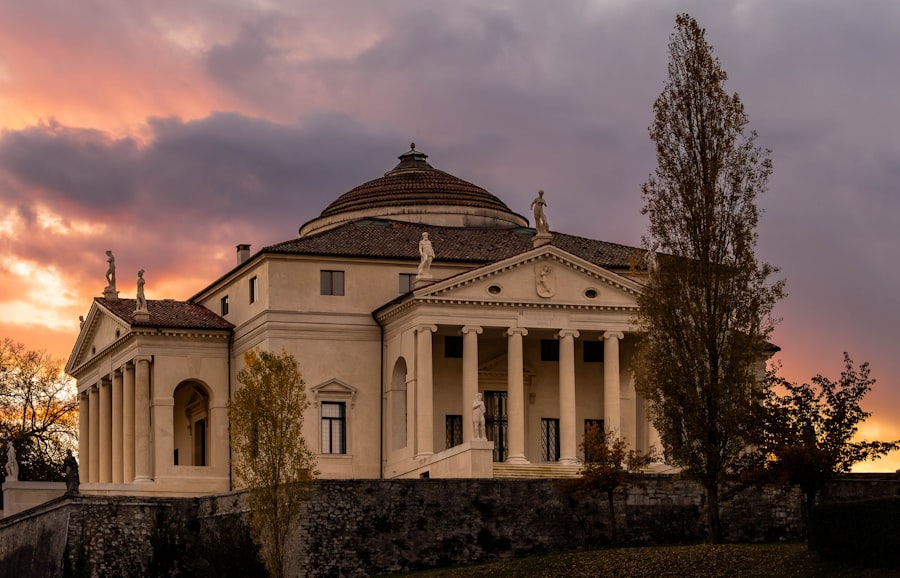The Restoration period in English literature, spanning from 1660 to 1700, marked a significant cultural shift following the tumultuous years of the English Civil War and the Interregnum. This era is characterized by the return of Charles II to the throne, which heralded a revival of arts, drama, and literature that had been suppressed during the Puritan Commonwealth. The Restoration was not merely a political restoration but also a cultural renaissance that embraced the complexities of human experience, often with a focus on wit, satire, and the exploration of social norms.
The literature of this time reflected a society eager to reclaim its identity and engage with the classical ideals that had been revered in ancient Greece and Rome. Neoclassicism emerged as a dominant literary movement during this period, drawing heavily on classical antiquity for inspiration. Writers sought to emulate the styles and themes of classical authors, emphasizing reason, order, and decorum.
This movement was characterized by its adherence to established forms and genres, such as the heroic couplet in poetry and the well-made play in drama. Neoclassical writers believed that literature should serve a moral purpose, instructing readers while also entertaining them. The interplay between Restoration literature and Neoclassicism created a rich tapestry of works that explored human nature, societal structures, and the complexities of morality.
Key Takeaways
- Restoration and Neoclassicism were literary movements that emerged in the 17th and 18th centuries, characterized by a return to classical ideals and a focus on reason and order.
- John Dryden, a prominent figure in Restoration literature, influenced the period with his emphasis on clarity, balance, and restraint in his works.
- John Milton, known for his epic poem “Paradise Lost,” incorporated neoclassical elements such as the use of classical mythology and heroic themes in his writing.
- Restoration and Neoclassicism played a significant role in shaping English literature by promoting a return to classical forms and themes, and emphasizing reason and order in literary works.
- Dryden and Milton, though both influential in their own right, had contrasting styles, with Dryden favoring clarity and restraint, while Milton’s works were characterized by their grandeur and complexity.
The Influence of John Dryden on Restoration Literature
John Dryden stands as a towering figure in Restoration literature, often regarded as the first Poet Laureate of England. His contributions to poetry, drama, and criticism were instrumental in shaping the literary landscape of his time. Dryden’s works are marked by their wit, sophistication, and a keen understanding of human psychology.
He was adept at blending classical forms with contemporary themes, creating a unique voice that resonated with audiences. His play “All for Love,” a retelling of Shakespeare’s “Antony and Cleopatra,” exemplifies his ability to infuse classical narratives with emotional depth while adhering to neoclassical principles. Dryden’s influence extended beyond his own writings; he played a crucial role in establishing literary standards for his contemporaries.
His critical essays, particularly “An Essay of Dramatic Poesy,” provided a framework for evaluating drama and poetry based on classical ideals. In this work, Dryden defended the use of rhyme in English drama against the backdrop of classical traditions that favored blank verse. His arguments not only elevated the status of English literature but also encouraged writers to explore new forms while remaining rooted in classical aesthetics.
Through his advocacy for unity of time, place, and action in drama, Dryden set a precedent that would guide playwrights for generations.
The Neoclassical Elements in the Works of John Milton

While John Milton is often associated with the earlier Renaissance period, his works exhibit significant neoclassical elements that align with the ideals of Restoration literature. Milton’s epic poem “Paradise Lost” is a prime example of how he synthesized classical themes with Christian theology. The poem’s grand structure and elevated language reflect the neoclassical emphasis on formality and decorum.
Milton’s use of blank verse allows for a fluidity that enhances the poem’s dramatic qualities while adhering to the neoclassical preference for elevated diction. Moreover, Milton’s exploration of reason and free will resonates with neoclassical ideals. In “Paradise Lost,” he delves into the complexities of human choice and moral responsibility, presenting characters who grapple with their decisions in a manner reminiscent of classical tragic heroes.
The portrayal of Satan as a complex antagonist challenges traditional notions of good and evil, inviting readers to engage with philosophical questions about authority and rebellion. This nuanced character development aligns with the neoclassical belief in the importance of moral instruction through literature, as Milton encourages readers to reflect on their own choices and the consequences that follow.
The Role of Restoration and Neoclassicism in English Literature
The Restoration and Neoclassicism played pivotal roles in shaping English literature by fostering an environment where creativity could flourish within structured frameworks. The period saw a resurgence of theatrical productions, with playwrights like Dryden and William Congreve revitalizing the stage through comedies of manners that critiqued contemporary society. These plays often employed wit and satire to expose the follies and vices of the upper classes, reflecting a growing interest in social commentary that would continue to evolve in later literary movements.
Neoclassicism’s emphasis on reason and order also influenced prose writing during this time. Authors such as Samuel Johnson and Jonathan Swift utilized their works to address societal issues while adhering to neoclassical principles. Swift’s “Gulliver’s Travels,” for instance, employs satire to critique human nature and political systems, showcasing how neoclassical elements can be harnessed to convey complex ideas.
The interplay between Restoration themes and neoclassical ideals created a literary landscape rich with diversity, allowing for experimentation within established forms while maintaining a commitment to moral instruction.
Comparing and Contrasting the Styles of Dryden and Milton
When examining the styles of John Dryden and John Milton, one can observe both similarities and stark contrasts that reflect their respective literary philosophies. Dryden’s writing is characterized by its accessibility and engagement with contemporary issues, often employing humor and satire to connect with his audience. His use of heroic couplets lends a rhythmic quality to his poetry that enhances its appeal while allowing for clever wordplay.
In contrast, Milton’s style is marked by its complexity and grandeur; his use of blank verse creates a more elevated tone that demands careful reading and contemplation. Thematically, Dryden often focused on human relationships and societal dynamics, exploring love, ambition, and moral dilemmas through relatable characters. His plays frequently depict the intricacies of courtly life, revealing the tensions between personal desires and societal expectations.
His exploration of free will in “Paradise Lost” invites readers to grapple with concepts of divine justice and human agency on a cosmic scale. While both writers engage with moral questions, Dryden’s approach is more immediate and personal, whereas Milton’s is expansive and philosophical.
The Legacy of Restoration and Neoclassicism in Modern Literature

The legacy of Restoration literature and Neoclassicism continues to resonate in modern literature, influencing contemporary writers across genres. The emphasis on structure, formality, and moral purpose can be seen in various literary movements that followed. For instance, the rise of the novel in the 18th century often incorporated neoclassical ideals through its focus on character development and social commentary.
Authors like Jane Austen employed wit and irony reminiscent of Restoration comedies while exploring themes of class and morality. Moreover, the satirical techniques pioneered by writers like Dryden have found new life in modern literature. Contemporary authors such as Jonathan Franzen and Zadie Smith utilize satire to critique societal norms and political landscapes, echoing Dryden’s approach to social commentary.
The exploration of complex characters grappling with moral dilemmas remains a hallmark of modern storytelling, reflecting the enduring influence of both Dryden’s accessible style and Milton’s philosophical depth. In conclusion, the Restoration period and Neoclassicism represent pivotal moments in English literature that shaped not only their contemporaneous works but also laid foundational principles for future literary endeavors. The interplay between these movements fostered an environment ripe for innovation while honoring classical traditions, resulting in a rich tapestry of literature that continues to inspire writers today.
If you are interested in exploring the philosophical underpinnings of the Restoration and Neoclassicism period, you may find the article on “Introduction to Nyaya and Vaiseṣika: Nyaya Pramanas, Laukika and Alaukika Vaiseṣika, Upalabdhi, Anupalabdhi, Padarthas, Atomistic Theory of Creation” to be a fascinating read. This article delves into the ancient Indian schools of thought that influenced philosophical discourse during this time period. Check it out























+ There are no comments
Add yours